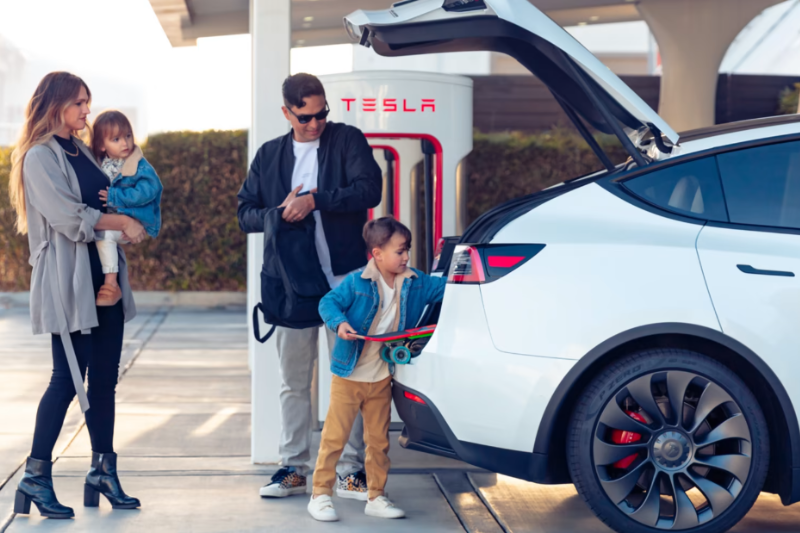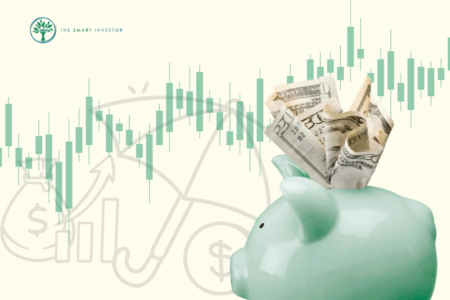The electric vehicle (EV) market is heating up, and two companies are leading the charge: Tesla (NASDAQ: TSLA) and BYD (HKSE: 1211).
With the global shift toward cleaner energy and cutting-edge technology, these giants are fighting for supremacy in an increasingly competitive sector.
But who will come out on top?
Global EV Market Momentum
The EV market saw a major surge in 2023, with global sales reaching 14 million units, a 35% jump from 2022.
As governments push for electrification and consumers embrace cleaner options, forecasts suggest 2024 will see 20% of global car sales come from EVs—equating to 17 million vehicles.
By 2025, the market is expected to generate US$828.5 billion in revenue, driven by rising consumer interest, government incentives, and rapidly improving charging infrastructure worldwide.
Market Leadership Dynamics
Tesla remains a leader in technological innovation, from its autonomous driving features (Autopilot) to its high-performance batteries, and integrated energy solutions like Powerwall and Solar Roof.
While its US market share declined from 65% in 2022 to 55% in 2023 due to increasing competition, it continues to dominate premium segments in Western markets.
Tesla’s brand strength and innovation pipeline remain key advantages in maintaining its premium position.
BYD leads global EV/hybrid production through efficient manufacturing processes and competitive pricing strategies.
With a 37% market share in China — the world’s largest EV market — BYD leverages local policy support while rapidly expanding into Europe and Latin America.
Its vertical integration, including in-house battery and semiconductor production, provides significant cost advantages as it positions itself as a cost-effective alternative to premium brands.
Revenue Comparison
The revenue comparison between Tesla and BYD from Q4 2022 through Q3 2024 reveals an interesting competitive dynamic (based on the above chart).
Tesla maintained its revenue leadership through most of the period.
BYD has shown remarkable growth and surpassed Tesla twice — first in Q4 2023 by a slim margin of US$198.7 million, and more significantly in Q3 2024 with a substantial lead of US$3.48 billion.
BYD has demonstrated stronger growth momentum, with a compound annual growth rate (CAGR) of 14.3% compared to Tesla’s more modest 2.0%. Over the entire period, BYD’s total revenue change was an impressive 26.4%, while Tesla showed a smaller increase of 3.6%.
The revenue gap between the two companies has fluctuated considerably. At its widest, Tesla led by US$5.8 billion in Q1 2023, but by Q3 2024, BYD had turned this around to lead by US$3.5 billion. This shift suggests a significant change in market dynamics and competitive positioning between these two major electric vehicle manufacturers.
Tesla’s quarterly revenue remained relatively stable between US$21.3 billion and US$25.5 billion throughout the period. In contrast, BYD showed greater volatility but stronger overall growth, with revenues swinging from US$17.3 billion to US$28.7 billion.
2024 Vehicle Sales Comparison
| Company | Number of Vehicles Sold (2024) |
| Tesla | 1.8 million vehicles |
| BYD | 4.3 million vehicles |
BYD’s impressive sales numbers in 2024—4.3 million vehicles—underscore its dominance in the mass-market segment. Tesla, in contrast, sold just 1.8 million vehicles, less than half of BYD’s total.
This highlights BYD’s ability to reach a broader consumer base, particularly in emerging markets, while Tesla focuses on the premium segment and enjoys higher margins.
Strengths and Challenges
| Tesla | BYD | |
| Core Strengths | – Industry leadership in innovation and premium segmentation- Higher profit margins from premium pricing and software services- Strong global brand recognition and customer loyalty- Advanced autonomous driving technology | – Market dominance in affordable EV segments- Vertically integrated manufacturing including batteries and semiconductors- Strong presence in emerging markets- Cost-effective production capabilities |
| Key Challenges | – High valuation multiples raising concerns about sustainability- Stock volatility influenced by regulatory challenges- Leadership risks tied to Elon Musk’s public profile | – Limited brand recognition outside of Asia- Heavy dependence on Chinese government policies- Lower margins compared to premium competitors |
Get Smart: Navigating the EV Landscape
The global EV race between Tesla and BYD is heating up, and both companies have their strengths.
Tesla leads in technological innovation and premium branding, while BYD offers a compelling value proposition with its cost-effective manufacturing and expansion into emerging markets.
As we look to 2025, Tesla’s premium leadership is secure, but BYD’s aggressive growth strategy and cost advantages make it a strong contender.
Investors need to weigh their risk tolerance and market preferences—whether they are seeking high-risk, high-reward growth (Tesla) or a stable, mass-market opportunity (BYD).
We have just revealed the top 7 US tech stocks poised for remarkable growth. In today’s fast-paced market, betting on these giants could mean more money in your pocket. With a focus on solid fundamentals and innovative prowess, these selections should earn a place in your portfolio. Click here to grab your FREE report now and start investing in the future, today.
Follow us on Facebook and Telegram for the latest investing news and analyses!
Disclosure: Joanna Sng does not own shares in any of the companies mentioned.





